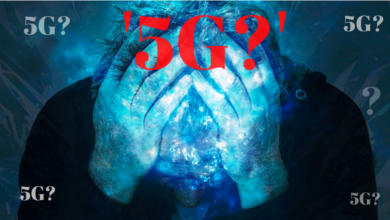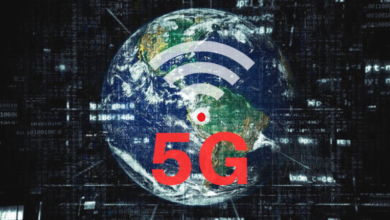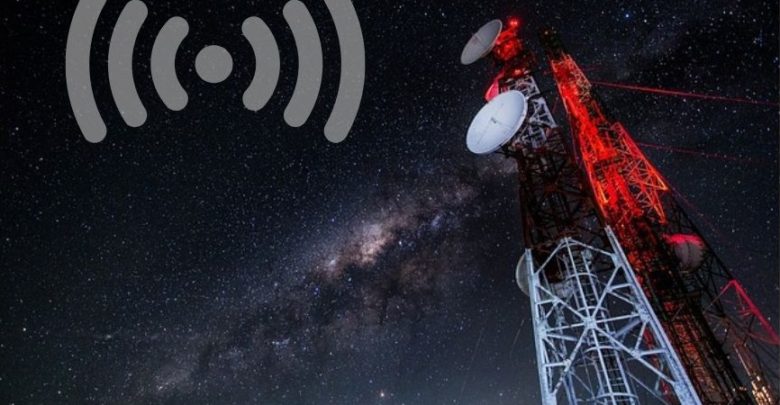
Times have changed and we have walked miles ahead when we talk about wireless technology. Earlier communication was limited and we all were mostly connected through fixed landlines.
However, now when we look back we feel proud in coming out with flying colours of success. In this topic, we are going to cover all about Wireless Technology Evolution.
Gone are the days when we had been relying completely on wire-based technology which has its own limitations and downsides. Now with wireless technology, we don’t need to be dependent and have a diverse portfolio to function our daily chores effortlessly.
Contents
What is Wireless Technology?
Wireless Technology can be explained as the package of technologies that proffer data transmission over wireless mediums via air on compatible devices. This builds a network between the computer system having adaptors which are wireless and the wireless accessories.
History of Wireless Technology :
It all started at the inception of the 20th century which started off with 0G Technology.
Yes! there was 0G technology (Zero Generation) in place from where we pushed our limits to travel across 1G, 2G, 2.5G, 2.7G, 3G, 3.5G, 3.75G, 3.9G, 4G and 5G.
It had been indeed a roller coaster ride full of advancements, challenges and then reaching to a flawless/smooth communication system.
Who discovered Wireless Technology?
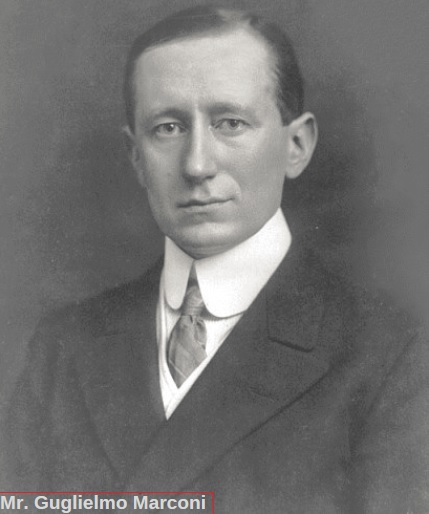
Wireless Technology was discovered by Mr. Guglielmo Marconi who was born on 25th April Year 1874 in Bologna, Italy.
He was an Italian inventor and physicist, who made a successful journey in discovering the wireless telegraph in the year 1896.
He was honoured with a Noble prize for Physics in the year 1909 which he happened to synergize with German physicist Mr. Ferdinand Braun.
Mr. Guglielmo Marconi took his last breath in Rome on 20th July year 1937.
Which was the very first Wireless Gadget discovered?
The evolution of mobile phones was bliss for mankind, they could now connect easily and communicate through wireless technology. They were invented in the early period of 1940s.
This is when the engineers came up with cells for mobile phone base stations while working at AT&T. The first mobiles which took birth were namesake mobiles in the name of connectivity. As it was merely used by the emergency services and taxi drivers to communicate based on two-way radios.
Motorola was the first company which offered mass production in the year 1973, where on 3rd April it produced handheld mobile phones.
Some interesting Facts about Wireless Technology :
Highlights:
1) WiFi’s Connection speed is determined by Distance.
2) WiFi networks can be both for Large and Short Distances.
3) WiFi Connections don’t possess a prerequisite of an Access Point.
4) WiFi Types differ and can’t necessarily be Compatible.
5) WiFi is not the sole form of Wireless Network.
|Read 20 Interesting & Weird Facts about WiFi You Should Know
Wireless Technology driven Devices are composed of various ranges in which they function which are categorized in the following manner :
1) Short Range
2) Medium Range
3) Long Range
The further explanation of each of these ranges can be described in the following manner :
1) Short Range :
1.1) Bluetooth Mesh Networking
1.2) Li-Fi stands for Light Fidelity: This is quite like Wireless communication technology however, it puts visible light into use for communicating in order to increase the bandwidth.
1.3) NFC stands for Near Field communication: This is a communication protocol that enables two electronic devices to create communication within the range of 4cm.
1.4) RFID stands for Radio Frequency Identification: This technology reads data stored in tags that are embedded in other items through the use of electromagnetic fields.
1.5) WIFI is also known as Wireless Fidelity: This is based on the local area network in which the devices can create communication through direct connection or via shared access points between individual devices.
1.6) Zigbee: This proffers everything low in terms of power consumption, cost, data rate and throughput. It is a communication protocol meant for personal area networking.
1.7) Z-Wave: This wireless communications protocol is utilized for home automation and security applications on a primary basis.
2) Medium Range :
2.1) LTE (Advance) stands for Long Term Evolution which is a 4G Technology: It is a high-speed communication meant for mobile networks. It has extended coverage to offer along with relatively high throughput and low latency, which is an enhanced version of the LTE standard.
3) Long Range :
3.1) LPWAN which stands for Low Power Wide Area Networking: This consists of a wireless network designed to permit low-range communication which is at a low data rate. This curbs the power and expenses for transmission. The LPWAN technologies and protocols include the following- Weightless, LoRaWan, etc.
3.2) VSAT which stands for Very Small Aperture Terminal- This is used through the support of dish antennas based on Satellite Communication Technology meant for narrowband and broadband data.
3.3) Wired Ethernet– This technology is put into use through twisted pair and fibre optic links along with the switches/hubs. This is a general-purpose networking standard.
3.4) PLC stands for Power Line Communication- This is a communication technology which functions by putting electrical wiring into use in order to carry power and data.
Wireless Technology Evolution of 1G, 2G, 3G, 4G, and Present 5G Technology :
Do you remember the times when visiting someone was the only way of communication but we progressed on the roads of technology? We saw 1G coming our way in the 80s, which was a baby step towards understanding how things can gradually be better.
It was signified by heavy devices with low and almost poor sound quality and had a lot of glitches.
Down the line, 2G stepped in which had a better quality of transmission, enhanced signal coverage, etc. It came into being in the 90s with the GSM standard also referred to as Global System for Mobile Communications.
It had a significant number of users who could now avail of the features of SMS, MMS and WAP which is Wireless Application Protocol (To connect internet on mobile), etc.
This took some time and we then came up with a better version of 2G Technology which was 2.5G Technology. This technology was somewhere between 2G and 3G Technology.
3G Technology took birth and took technology to the next level. This was the turning point for early 2000 when people could not only access the previous generic services but could also witness something extraordinary.
With the improvised transmission protocols that are High-Speed Packet Access, the quality of multimedia services amplified drastically. Internet was now present not just on desktop computers but also the cellphones.
People were now glued to high-speed data in surfing the internet and smooth video calls.
This was not just the end but the bend where technology never ceased to surprise us as it gifted us with the 4G Technology. This showed up in late 2000 with unexpectedly much higher seamless quality connectivity.
People could now access high-definition video calling and surfing without any drops on their smartphones, tablets and other 4G-supporting devices. This fostered reduced latency and faster/swift access that could be only achieved with the support of this technology.
Lastly, the much-awaited Technology which on its way to turning the tables is 5G Technology. All this owes a major credit to the increasing number of mobile users and internet subscribers.
Where smartphones are no more a status symbol but rather a utility-based pertinent device for carrying out minute chores to major tasks on both domestic and commercial levels.
|Related: Is 5G Dangerous for our Health and Environment? Check the facts!
One can expect the unexpected from 5G Technology with its buddies for life which is the Augmented Reality and Virtual Reality. With this visualization in the picture, the gaming industry will grow and will upturn the Internet of Things.
5G The Future of Wireless Technology :
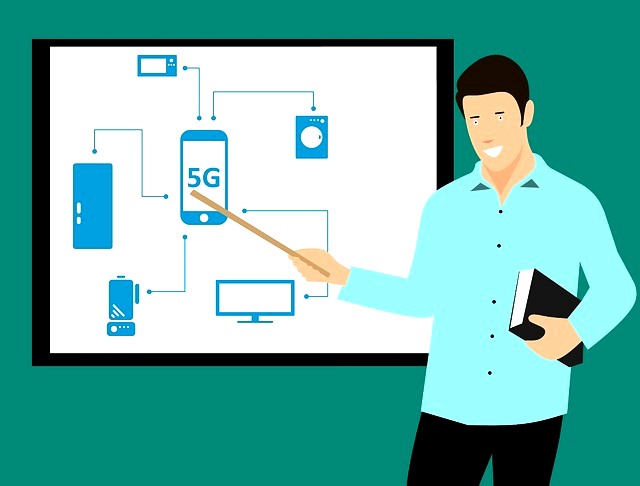
5G Technology serves customers with services which include SMS, calling, surfing through websites, etc.
All this is possible owing to the foundation laid down the 4G LTE that gives higher speed in terms of data transfer pan networks.
Now you won’t need to witness the long buffering sessions that circle on your screen, as it will load the high-definition videos seamlessly.
We had our share of benefits when we were blessed with 4G Technology and we were all happy and gay.
However, with the advent of 5G Technology, we all paced our paths too to welcome it with open arms. However, while we feel all excited this technology is still facing obstacles in coming through full-fledged.
All this can be stated as we still lack in the infrastructure and it will also make use of high-frequency spectrum than the 4G technology. For this, we will need to possess more base stations in order to have flawless coverage. Having said that in no time soon we will see it all coming our way by the year 2020.
It is believed that there will be few industries that will redefine in the presence of 5G Technology. These industries will include Transportation Industry, Manufacturing Industry, Retail Industry, Supply Chain Management, Military/Armed Forces, Education Sector and Cloud Computing.
|Read Also All You Want to Know about 5G Wireless Technology | History, Facts, Future
A) Transportation Industry :
Transportation will not be left untouched through 5G Technology, as it will boost communication between vehicles and infrastructure. This increases the efficiency and effectiveness levels of the traffic control system, real-time information exchange, curbing accidents, tracking vehicles, etc.
B) Manufacturing Industry :
With the inception of 5G Technology, Augmented Reality can seep in giving away a package of benefits to this industry. Augmented Reality can potentially assist in repairing processes, maintenance, and training techniques/methods. Also, it will help in curtailing the breakdown expenditure and production time thereby bringing more productivity.
C) Retail Industry :
We cannot underestimate the power of 5G Technology, which will bring its association with Virtual Reality and Augmented Reality. With both, these technologies through the indispensable presence of 5G Technology people will not have to wait in long queues to try out clothes in green rooms. They will be able to access the clothing suitability with just a click away feature and at their own comfort/feasibility.
D) Supply Chain Management :
5G Technology is expected to back the supply chain management through its advanced features that will bring a rise in production, will make the logistics more channelized and will cut down the cost.
E) Military / Armed Forces :
The people who work every single minute to save our lives, need this 5G technology as the knight in their shining Armour to safeguard themselves as well.
This stands true when 5G Technology will help the army men in injury prevention and possible deaths during the war or at the war zones. The real-time information relay will enhance and will definitely become more accurate.
They can gather more detailed information for Budgeting the required resources and expected expenditures there on that will be beneficial for the past, present and futuristic perspectives.
F) Education Sector :
Technological advancements will bring a certain shift in the ways of teaching and learning methods. Augmented Reality and Virtual Reality here too will play an imperative role.
The teaching methods can be aided through Virtual Education Trips to different places across the globe, bringing non-existent things to reality to experience the virtual reality for better understanding, etc.
The students will not just learn in a much more interactive and informed manner but will also have higher retention power through the audiovisual presentation of information.
The traditional methods are in general composed of various cost heads that can be cut down through the implementation of this technology.
G) Cloud Computing :
The 5G Technology will replace the high latency, fluctuating connectivity and low throughput with seamless real-time data transfer and information flow.
Conclusion :
This wraps up all the chapters that related themselves to Wireless Technology and Wireless Technology Evolution as a whole and its implications for the future.
We hope that you enjoyed this odyssey of technological information, and must have now landed being more informed. This endeavour had been not just to extinguish your curiosity but has also been penned down to bring across the most detailed information under one roof.


